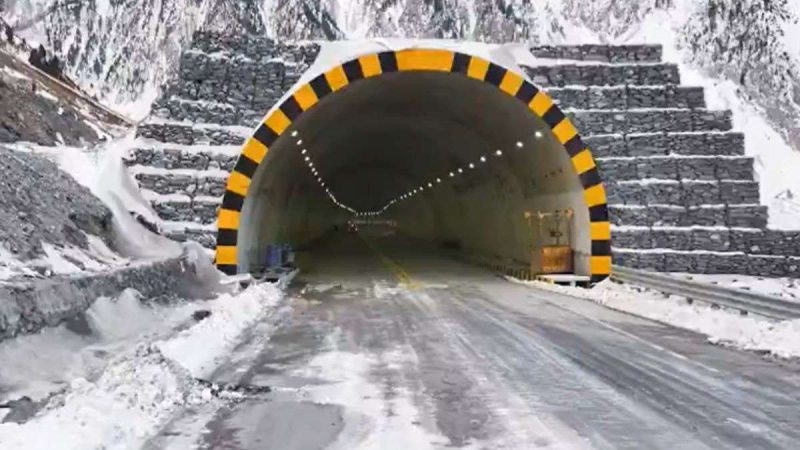The Zojila Tunnel, currently under construction, is set to become Asia’s longest tunnel, connecting Kashmir to Ladakh. Once ready, it will also offer all-weather connectivity between the Ladakh region and the rest of the country. However, building a tunnel this long in such extreme weather conditions in the Himalayas does not come without challenges. Read on to know more about this in detail.
Zojila Set To Become Asia’s Longest Tunnel By 2026
The 13-km-long Zojila Tunnel, located in a sub-zero temperature zone, is expected to be completed by 2026. It will link the Ladakh region to the rest of India. According to a report by NDTV, 70% of the tunnel work had already been completed as of March this year. Union Transport Minister Nitin Gadkari had earlier estimated the tunnel’s construction cost to be ₹12,000 crore. However, recent reports suggest it may be completed at around ₹5,500 crore! The construction update was also shared by MEIL Group, the company executing the Zojila Tunnel project, on their official X account.
Designed as a 7.57 m high, horseshoe-shaped, single-tube, two-lane tunnel, it will be built under the Zojila Pass in the Himalayas, between Ganderbal in Kashmir and Drass in Kargil. Currently, crossing the Zojila Pass takes around three hours, but this new tunnel is expected to reduce the commute time to just 20 minutes.
Also Read: Zojila Tunnel Project: From Budget To Length, Here’s All About It
Challenges Of Building A Tunnel In The Himalayas
The tunnel not only holds great importance for residents of Ladakh, who face difficulties during winter due to snow-covered roads, but also for the Army. This tunnel will ensure an uninterrupted flow of troops and supplies throughout the year. But the project has faced several challenges. As per the Daily Excelsior, extreme weather, avalanches, logistical difficulties, and manpower shortages have slowed the process. The installation of critical infrastructure like ventilation, lighting, and emergency exits has also added to the growing difficulties.
The tunnel is being constructed using the New Austrian Tunnelling Method (NATM), which requires constant geotechnical monitoring and adaptive support strategies. Despite these challenges, the tunnel is expected to open by 2026. It will also be equipped with CCTV, radio control, and an uninterrupted power supply, as per NDTV.
Also Read: Srinagar-Leh National Highway Reopens In Record-Breaking Time Of Just 68 Days
This transformative project won’t just ease movement for civilians and the army, but it is also expected to redefine Ladakh’s future and give a boost to the tourism sector, as well.
Cover Image Courtesy: @MEIL_Group/ X
For more such snackable content, interesting discoveries and the latest updates on food, travel and experiences in your city, download the Curly Tales App. Download HERE.
